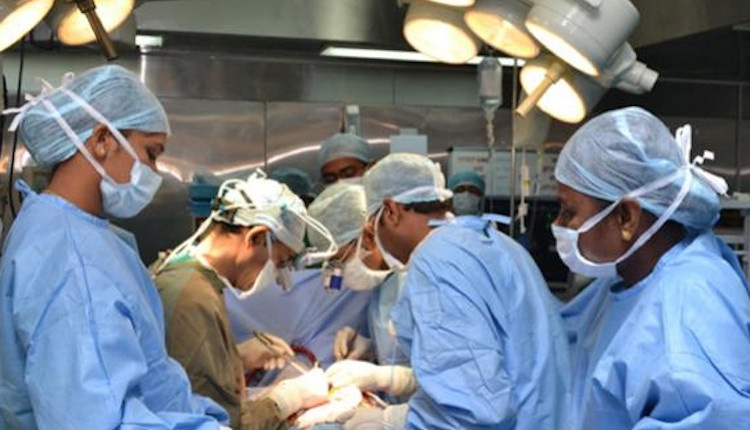
Organ transplantation: diagnosis and care of waiting patients
Patients wishing to have access to transplantation undergo a standardised check-up by specialists, for a general evaluation of organs and systems
The waiting list process follows a procedure common to all transplant centres.
The diagnosis and treatment of patients waiting for an organ transplant are defined according to the severity of the pathology they suffer from.
Kidney transplantation
A kidney transplant never takes on the characteristics of a life-saving therapy, as is the case with liver, heart and lung transplants, but is a choice aimed at improving quality of life.
Particular attention must therefore be paid to the assessment of risk factors.
Absolute contraindications to transplantation are now restricted to borderline situations in which other very serious pathologies are present.
Even age does not represent an immediate exclusion factor, although further investigations are necessary as one gets older.
More frequently, contraindications are related not so much to renal transplantation, understood as a surgical act, but to immunosuppressive therapy.
Liver transplantation
Cirrhosis in all forms is the main cause of liver failure in both Europe and the United States.
The conditions for inclusion on a waiting list are based on thorough medical evaluations that mainly concern
- the irreversibility of the liver failure;
- the stage of the disease;
- the presence of intercurrent diseases;
- the possibility of behaviour in the patient that may lead to a recurrence of the liver disease (alcoholism, drug addiction).
When the potential patient is not yet an adult, the liver disease may lead to growth retardation.
Paediatric liver transplantation is therefore indicated at an earlier stage of the disease than in adults
Contraindications are important for the selection of transplantation candidates and are mainly the unacceptable operative and post-operative risk.
Many are general contraindications for any major surgery, such as severe lung and heart disease.
Others, such as uncontrolled infections or intercurrent tumours, may be aggravated by immunosuppressive treatment.
Heart transplantation
It is indicated in any heart failure that reaches the terminal stage of its evolution and for which there is no other therapeutic alternative.
The cardiomyopathies that most frequently lead to transplantation are:
- Dilated cardiomyopathies: almost always primary;
- Ischaemic cardiomyopathies: in older patients,
- Cardiomyopathies of other origin: these are rarer (valvular cardiomyopathy and congenital tumour cardiomyopathy).
For inclusion on the waiting list, the cardiac transplant candidate must have no absolute contraindications.
Some conditions that were universally recognised as absolute contraindications in the early 1980s are now only relative contraindications or have even been abandoned as selection criteria.
Relative contraindications
- Advanced age
- Severe pulmonary hypertension
- Severe renal or hepatic dysfunction
- Systemic infection in active phase
- History of behavioural disorders
- Insulin-dependent diabetes mellitus
Lung transplantation
In order to assess the risk and benefit of a lung transplant, it is necessary to define the natural history, stage, quality of life and life expectancy associated with the pathology leading to end-stage chronic respiratory failure.
This pathology must not be too advanced, so as not to preclude the success or possibility of transplantation, and at the same time its severity must be such as to justify the risks of transplantation.
It is important that the patient understands the importance of this evaluation process and is informed that, with lung transplantation, he or she will have a better quality of life and a longer life expectancy, but may experience side effects, and will still have to undergo treatment and clinical examinations post-operatively.
The transplant can be single or bilateral; it is generally bilateral if an infectious component is present, so as to prevent propagation to the transplanted organ.
In the case of pathologies that may recur in the transplanted organ (e.g. neoplasms, post-embolic pulmonary hypertension, pulmonary fibrosis following connective tissue disease), the indication for transplantation must be carefully assessed.
Read Also:
Emergency Live Even More…Live: Download The New Free App Of Your Newspaper For IOS And Android
How Is A Face Transplant Performed? – VIDEO


